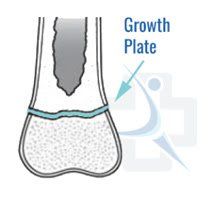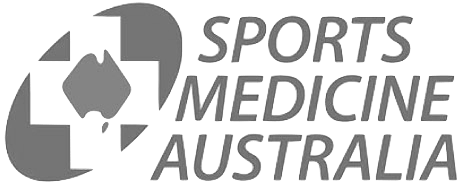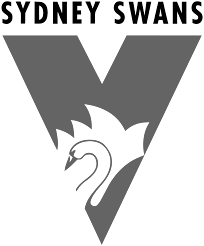Childhood Injuries
What Sports Injuries Occur in Kids?
The bodies of children and adolescents are structurally different to adults which makes them at risk of different injuries.
Typical injuries in children include damage to and inflammation of growth plates particularly during periods of rapid growth.
The "osteochondroses" are the group of disorders affecting the growing ends of bones and attachments of tendons and ligaments.
The good news is that children will often outgrow these disorders in time, as their growth plates mature.
We can predict within a couple of years, the timing of growth plate closure, and therefore the approximate resolution of pain.
As a society there is increasing pressure for children to specialise in sport at an early age, with the goal of reaching mastery and a achieving at a very high level of competition. However, while the skill acquisition may benefit from this approach, a good diversity of activity can help both enjoyment of sport and socialisation. Another issue that is changing the landscape of childhood injuries is childhood obesity.
Monitoring growth can be a very helpful way of identifying and responding to periods of peak growth (growth spurts).
Boys grow on average 6 cm per year, and girls grow about 4-5 cm per year.
This means that growth of more than 1 cm per month can indicate they are in a growth spurt.
It makes sense to reduce training and playing loads (such as cutting out one sport or training session per week) during these times.
Type of Childhood Disorders
Commonly seen conditions include;
- Growth Plate Injuries (fractures through or across the growth plate)
- Osgood Schlatter’s disease
- Sever's disease
- Sindig-Larrsen-Johannsen apophysitis
- Slipped Upper Femoral Epiphysis (Growth Plate)
- Perthe's Disease (AVN of the hip)
- Adolescent Back Pain, Scoliosis and Scheurmann's disease
- Osteochondritis Dissecans
Growth Plate Injuries
What are Growth Plates?
A growth plate is a gap in bone that is made of cartilage and allows the bone to continue to grow. When the bone stops growing the growth plate fuses with the continuous bone.
At What Age Do Growth Plates Close?
It is a common misconception that growth plates stay open until you stop growing.
Different growth plates fuse at different ages and, in many cases, the growth plates are at their most vulnerable to injury just before or as they start to fuse.
Types of Growth Plate Injury
Traction Apophysitis
The most common type of growth plate injury is called ‘traction apophysitis’. The apophysis is a growth plate that occurs where a tendon attaches to the bone.
Repetitive use of the tendon pulls on the growth plate. Different growth plates are vulnerable at different ages resulting in the following examples of apophysitis
- Back of the heel (Sever’s Disease)
- Front of the knee (Osgood Schlatter’s Disease)
- Sit-bone (Hamstring Apophysis)
- ‘Point of the hip’ (ASIS Apophysitis)
Apophyseal Avulsion
An avulsion means ‘pulling away’ and it usually occurs after a there has been a period of traction apophysitis (see above). The patient will usually describe days, weeks or months of growth plate pain (like an ache after sport) but then will experience a sudden and very painful ‘pop’ that occurs while producing a maximum sporting effort like sprinting, jumping or kicking a ball with maximum force. Usually, this produces significant pain and limping afterwards. Children are extremely resilient because they can compensate for these injuries with further growth and remodelling, but very severe injuries sometimes require surgery.
Growth Plate Fractures
Growth plates can become fractured with trauma. The risk with a growth plate fracture is that it can result in disrupted growth if it is not managed correctly (and sometimes even if it is!) These always need to be managed by an expert.
Slipped Growth Plates
There is a growth plate in the hip that can slip without an obvious cause. This is a very serious condition that requires immediate surgical attention. It generally happens in adolescents who develop groin/ thigh (or even KNEE) pain and have a painful limp with pain rotating their hip inwards. This usually needs an urgent X-ray to check to see if the growth plate has slipped.
Growth Plate Stress Injuries
Growth plates can become overloaded with repetitive sports which can result in stress injuries. Stress injuries can be a bit like growth plate fractures in that if they are managed incorrectly there is a risk that it can disrupt the metaphyseal blood supply and hence the normal growth of that bone. Common areas of concern are the wrists of gymnasts and knees in running and jumping athletes.
What is the Treatment for Growth Plate Injuries?
As there are many types of growth plate injuries, there is no single treatment for all.
The most common and least concerning is a traction apophysitis which almost all active kids will get to a varying degree at some stage.
Apophysitis is generally "self-limiting" and the best treatment is to respect moderate or severe pain with rest. Pushing through strong pain for a long period of time can lead to pain sensitisation and possibly some damage, but there is no long-term evidence of this.
All the injuries that adults suffer can occur in children too. As children grow, their movement efficiency and coordination improves. Strength training, warm-ups before exercise and consultation with a paediatric physiotherapist can help to minimise injury risk in sport.
At the other end of the spectrum is a slipped femoral head growth plate which requires urgent surgical referral.
A specialist Sport and Exercise Physician has the necessary experience and skills to determine the correct treatment and the urgency of treating a growth plate injury.
Do Anti-Inflammatories Help Growth Plate Injuries?
Anti-inflammatory medication (NSAIDs) can be a very effective short-term treatment for an inflamed apophysis but is not indicated for a growth plate fracture. NSAIDs should be carefully prescribed (at the smallest effective dose, for the shortest time) and monitored because they can have significant side effects.
In traction apophysitis, there is often excessive inflammation and judiciously using anti-inflammatory medication can be part of an effective strategy at treating the pain. The most important treatment is load management (prioritising favourite sports, and match-play over training) and optimism that the pain will settle once skeletal maturation is achieved.











